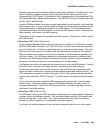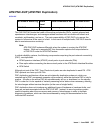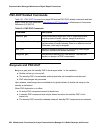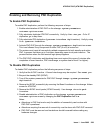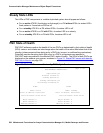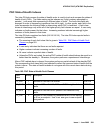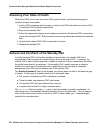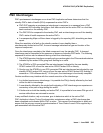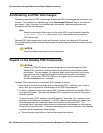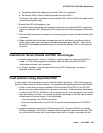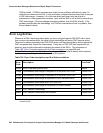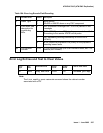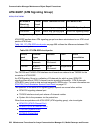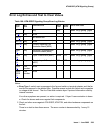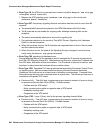
ATM PNC-DUP (ATM PNC Duplication)
Issue 1 June 2005 593
PNC Interchanges
PNC spontaneous interchanges occur when PNC duplication software determines that the
standby PNC’s state of health (SOH) surpasses the active PNC’s.
● PNC-DUP executes a spontaneous interchange in response to a message from a PNC
component MO indicating that either a fault has occurred on the active PNC or a fault has
been resolved on the standby PNC.
● The PNC SOH is compared to the standby PNC, and an interchange occurs if the standby
PNC’s state of health surpasses the active PNC’s.
● A corresponding Major or Minor alarm is logged by the reporting MO, stimulating an alarm
report.
When the resolution of a fault on the standby renders it more healthy than a
simultaneously-faulted active PNC, the error message indicates the type and location of the
improved component.
Once the interchange completes, the failed component is on the standby PNC. A demand
interchange can be requested in the presence or absence of standby PNC faults. The following
sequence of actions can be observed during a fault-free interchange:
1. The ATM-Expansion Interfaces currently acting as archangels in the PNs are deactivated as
indicated by the amber LEDs going from flashing to on solid.
2. The ATM-EIs in IPSI connected PNs are interchanged, indicated by the new standby
ATM-EI amber LED off and the new active ATM-EI amber LED on steady.
3. One by one, the ATM-EIs in non IPSI connected PNs are interchanged as indicated by new
standby ATM-EI amber LED turning off and the new active ATM-EI amber LED flashing (2
seconds on / 200 milliseconds off). At this point, the interchange is functionally complete.
Certain conditions may interfere with the normal execution of the interchange:
1. In a faulted spontaneous interchange, it is possible the PN(s) directly affected by the fault
will be the last to interchange.
2. A user directly affected by the single fault instigating a PNC interchange can experience a
momentary voice path outage during the switch.
3. If faults exist on both the standby and active PNC, it is possible to have some PNs go out of
service while others are returned to service.
In any multifault situation, rely on status pnc to determine which is the active PNC.
PNC duplication informs Timing Synchronization maintenance when a PNC interchange has
been completed and indicates which PNC is active. This causes Synchronization to audit and
ensure that the primary source for synchronization of Tone-Clocks in each PN is supplied by a
path associated with the active PNC.



